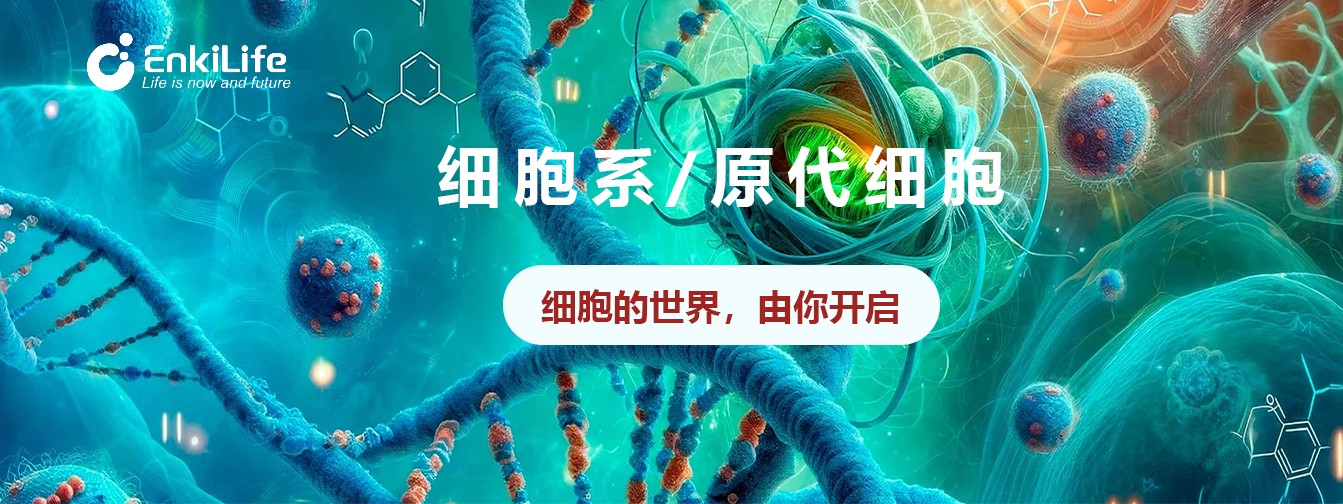人皮肤癌细胞A2058
发表时间:2025-10-16一、细胞起源
1. 组织来源:A2058细胞系源于人皮肤恶性黑色素瘤的淋巴结转移灶,属于侵袭性较强的黑色素瘤模型[1][2]。
2. 遗传背景:携带BRAF V600E突变(约80%黑色素瘤常见驱动突变),导致MAPK信号通路持续激活,促进肿瘤增殖[3][4]。

二、生物学特性
1. 增殖与凋亡:
高增殖率,对BRAF抑制剂(如Vemurafenib)敏感,但易产生耐药性[2][4]。
凋亡途径依赖caspase激活,且Stat3信号阻断可诱导p53依赖性凋亡[5][6]。
2. 迁移与侵袭:
高转移潜能,依赖MMP-1/2/9降解细胞外基质,侵袭I型胶原需成纤维细胞旁分泌因子(如MMP-3)激活[7]。
上皮-间充质转化(EMT)标志物(TWIST、SLUG)上调,增强转移能力[2][8]。
3. 信号通路:
MAPK(BRAF/MEK/ERK)和PI3K/AKT通路持续活化,驱动恶性表型[1][4]。
耐药株(A2058R)中CD271、SOX10等干细胞标志物表达升高[2]。
代谢特征:耐药株糖酵解增强,磷酸烯醇式丙酮酸羧激酶1(PEPCK1)上调,促进化疗抵抗[2]。
三、培养与储存
1. 培养基:DMEM+10% FBS+1% P/S,37℃、5% CO?培养[9]。
2. 冻存条件:30%基础培养基+60%FBS+10%DMSO,液氮保存[9]。
3. 鉴定要点:需定期检测BRAF V600E突变状态及STR分型,避免交叉污染[4]。
四、研究应用领域
1. 药物筛选平台:
用于BRAF/MEK抑制剂(如Dabrafenib/Trametinib)疗效评估[4][10]。
天然化合物(如Hispidulin、芫花酯甲)的抗增殖、抗迁移活性测试[12][14]。
2. 转移机制研究:
模拟肿瘤-微环境互作(如成纤维细胞共培养),研究MMPs介导的侵袭[7]。
EMT及耐药机制探索[2][8]。
免疫治疗模型:联合免疫检查点抑制剂(如PD-1抗体)的协同效应评估[4]。
五、近几年研究进展(2020–2024)
1. 克服耐药性:
Alantolactone通过抑制STAT3/Oct4/Sox2通路,逆转A2058对MAPK抑制剂的耐药性[10]。
3-巯基丙酸靶向抑制PEPCK1,恢复BRAF抑制剂敏感性[2]。
2. 天然化合物治疗:
Bornyl cis-4-羟基肉桂酸酯抑制FAK/PI3K/AKT和MAPK通路,阻断EMT及转移[8]。
Hispidulin诱导G0/G1期阻滞及ROS依赖性凋亡[14]。
微环境调控:胚胎干细胞微环境下调PI3K/AKT通路,抑制A2058恶性行为[1]。
六、局限性与克服方法
1. 局限性:
体外培养丧失肿瘤微环境复杂性,难以模拟体内耐药[2]。
遗传漂变可能导致实验结果不稳定[1]。
2. 克服方法:
开发3D培养或类器官模型,整合微环境因素[10]。
联合多组学分析(如单细胞测序)解析异质性[2]。
七、总结与展望
A2058细胞系是研究黑色素瘤转移、耐药及靶向治疗的关键模型。未来需:
1. 深入探索微环境与肿瘤互作的新靶点(如代谢重编程)[2][10]。
2. 开发基于CRISPR的基因编辑技术,构建更精准的耐药模型。
3. 推动天然化合物与免疫治疗的联合应用[8][14]。

参考文献
1. Embryonic stem cell microenvironment suppresses the malignancy of cutaneous melanoma cells by down‐regulating PI3K/AKT pathway. Wang C, et al. Journal of Cellular Physiology. 2019;234(8):13859-13876. [PMID: 30548608]
2. Overcoming chemoresistance to b-raf inhibitor in melanoma via targeted inhibition of phosphoenolpyruvate carboxykinase1 using 3-mercaptopropionic acid. Ren M, et al. Molecular Therapy - Oncolytics. 2022;24:449-461. [PMID: 35118191]
3. Mutations of the BRAF gene in human cancer. Davies H, et al. Nature. 2002;417(6892):949-952. [PMID: 12068308]
4. Current Advances in the Treatment of BRAF-Mutant Melanoma. Patel H, et al. Cancers. 2020;12(2):483. [PMID: 32066501]
5. Restored expression of the atypical heat shock protein H11/HspB8 inhibits the growth of genetically diverse melanoma tumors through activation of novel TAK1-dependent death pathways. Smith CC, et al. Cell Death & Disease. 2012;3(8):e371. [PMID: 22825471]
6. Role of Stat3 in Regulating p53 Expression and Function. Niu G, et al. Molecular and Cellular Biology. 2005;25(17):7432-7440. [PMID: 16107695]
7. A Novel Host/Tumor Cell Interaction Activates Matrix Metalloproteinase 1 and Mediates Invasion through Type I Collagen. Benbow U, et al. Journal of Biological Chemistry. 1999;274(36):25371-25376. [PMID: 10464252]
8. Bornyl cis-4-Hydroxycinnamate Suppresses Cell Metastasis of Melanoma through FAK/PI3K/Akt/mTOR and MAPK Signaling Pathways and Inhibition of the Epithelial-to-Mesenchymal Transition. Yang TY, et al. Journal of Agricultural and Food Chemistry. 2018;66(29):7666-7672. [PMID: 29989397]
9. 人皮肤癌细胞A2058 说明书. 武汉恩玑生命科技有限公司.
10. Alantolactone enhances the sensitivity of melanoma to MAPK pathway inhibitors by targeting inhibition of STAT3 activation and down-regulating stem cell markers. Zhao K, et al. Biomedicine & Pharmacotherapy. 2024;174:116505. [PMID: 38770977]
11. 李思蒙,等. 芫花提取物及单体化合物体外抗肿瘤活性的初步筛选研究. 中国中药杂志. 2012;37(21):3255-3260.
12. Anti-Proliferative and Anti-Migratory Activities of Hispidulin on Human Melanoma A2058 Cells. Chang CJ, et al. Molecules. 2021;26(13):3908. [PMID: 34209367]




